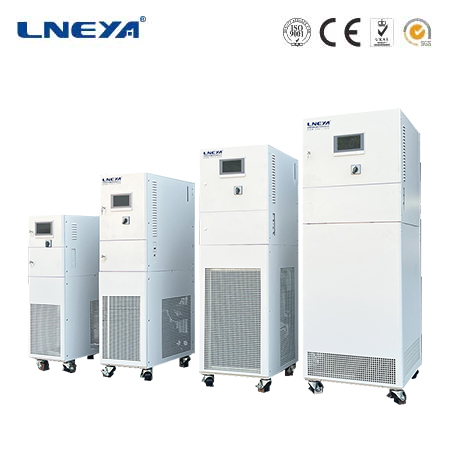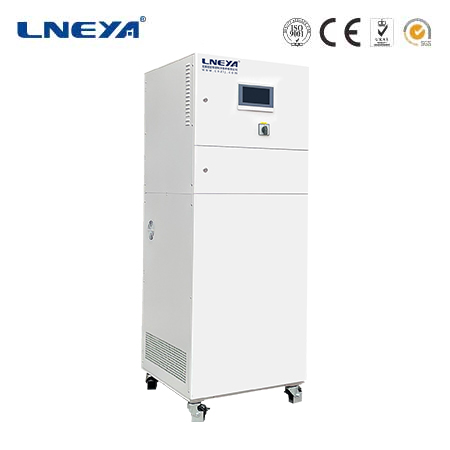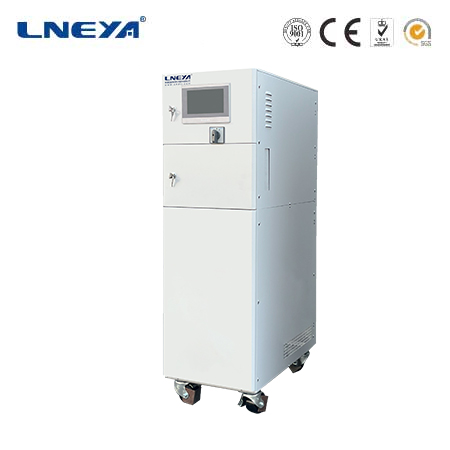small water chiller units
What are Small Water Chiller Units?
Small water chiller units are compact, self – contained cooling systems designed to lower the temperature of water, which is then used to remove heat from various processes or equipment. These units are smaller in size compared to large – scale industrial chillers but are highly efficient in providing the necessary cooling capacity for specific applications. They are often used in settings where a large – scale cooling infrastructure is not required or feasible, such as small – scale manufacturing plants, laboratories, and medical facilities.

Working Principle
The operation of small water chiller units is based on the vapor – compression refrigeration cycle, which is a common principle in most refrigeration and cooling systems. This cycle involves four main components: a compressor, a condenser, an expansion valve, and an evaporator.
Compressor: The compressor is the heart of the refrigeration cycle. It sucks in low – pressure, low – temperature refrigerant gas from the evaporator. By compressing the gas, it increases both its pressure and temperature. The high – pressure, high – temperature refrigerant gas then flows out of the compressor and into the condenser. The compression process is essential as it raises the temperature of the refrigerant above that of the surrounding environment, allowing for efficient heat transfer in the condenser.
Condenser: In the condenser, the hot refrigerant gas releases heat. There are different types of condensers, with air – cooled and water – cooled being the most common. In air – cooled condensers, a fan blows ambient air over the condenser coils. As the hot refrigerant gas passes through these coils, it transfers heat to the air, causing the refrigerant to condense into a liquid. In water – cooled condensers, water is used as the cooling medium. The water absorbs the heat from the refrigerant, and the now – cooled liquid refrigerant moves on to the next component in the cycle. The heat transfer in the condenser is crucial for converting the refrigerant from a gas to a liquid state, preparing it for the next stage of the cycle.

Expansion Valve: The liquid refrigerant then passes through the expansion valve. This valve reduces the pressure of the refrigerant significantly. As the pressure drops, the refrigerant expands and cools down. The expansion process is adiabatic, meaning no heat is exchanged with the surroundings. The low – pressure, low – temperature refrigerant now enters the evaporator in a state where it can absorb heat effectively.
Evaporator: In the evaporator, the cold refrigerant absorbs heat from the water that needs to be cooled. The water, which is circulated through the evaporator, transfers its heat to the refrigerant. As a result, the refrigerant evaporates back into a gas, and the water is cooled. The cooled water is then pumped out of the chiller unit and sent to the process or equipment that requires cooling. The gaseous refrigerant returns to the compressor, and the cycle repeats. This continuous cycle of refrigerant flow and heat transfer enables the small water chiller unit to maintain a consistent supply of cooled water.
Components of Small Water Chiller Units
Refrigerant System Components
Compressor: As mentioned earlier, the compressor is a critical component. In small water chiller units, reciprocating, scroll, or rotary compressors are commonly used. Reciprocating compressors use a piston – cylinder arrangement to compress the refrigerant gas. Scroll compressors consist of two interleaved spiral – shaped scrolls, one fixed and one orbiting, which trap and compress the refrigerant. Rotary compressors use a rotating mechanism to compress the gas. The choice of compressor depends on factors such as the required cooling capacity, energy efficiency, and noise levels.
Condenser: Air – cooled condensers are popular in small water chiller units due to their simplicity and ease of installation. They typically have finned coils to increase the surface area for better heat transfer to the air. Water – cooled condensers, on the other hand, are more efficient in heat transfer but require a water supply system. They are often used in applications where space is limited, and the higher heat – transfer efficiency is crucial.
Expansion Valve: Capillary tubes and thermostatic expansion valves are commonly used in small water chiller units. Capillary tubes are simple, inexpensive devices that rely on the restriction of the refrigerant flow to reduce pressure. Thermostatic expansion valves, however, are more sophisticated. They adjust the flow of refrigerant based on the temperature and pressure conditions at the evaporator outlet, ensuring optimal performance and efficiency.
Evaporator: The evaporator in a small water chiller unit is designed to maximize heat transfer between the refrigerant and the water. It can be a shell – and – tube heat exchanger, where the water flows through the tubes and the refrigerant surrounds the tubes in the shell. Plate – type heat exchangers are also used, which consist of a series of thin metal plates with channels for the water and refrigerant to flow through. These plates provide a large surface area for efficient heat transfer.
Water – Circulation Components
Water Pump: A water pump is used to circulate the water through the chiller unit and to the equipment or process that needs cooling. Centrifugal pumps are commonly used in small water chiller units. They work by using a rotating impeller to create a pressure difference that forces the water to flow. The pump is sized according to the required flow rate and the pressure head needed to overcome the resistance in the piping system.
Water Tank: Some small water chiller units are equipped with a water tank. The tank stores a certain volume of water, which helps to maintain a stable water supply and can also act as a buffer to handle fluctuations in the cooling demand. The tank may be open or closed, with closed tanks being more common as they prevent contamination of the water and reduce the risk of evaporation.

Filters: Filters are installed in the water – circulation system to remove impurities from the water. These impurities can include dirt, rust, and other particles that could potentially damage the chiller unit or the equipment being cooled. Sediment filters and cartridge filters are commonly used, and they need to be regularly maintained or replaced to ensure proper operation.
Applications of Small Water Chiller Units
Laboratory Applications
In laboratories, small water chiller units are used to cool a variety of equipment. For example, they are used to cool lasers in spectroscopic analysis. Lasers generate a significant amount of heat during operation, and if not cooled properly, their performance and lifespan can be affected. Small water chiller units can provide a stable and controlled cooling source to maintain the optimal operating temperature of the lasers.
They are also used to cool analytical instruments such as high – performance liquid chromatography (HPLC) systems. The columns in HPLC systems need to be maintained at a specific temperature for accurate separation of components. Small water chiller units can ensure that the temperature of the mobile phase and the column remains constant, improving the accuracy and reproducibility of the analysis.
Medical Field Applications
In medical facilities, small water chiller units are used for several purposes. They are used to cool medical imaging equipment such as magnetic resonance imaging (MRI) machines. MRI machines generate a large amount of heat, and proper cooling is essential to ensure the accurate functioning of the superconducting magnets and other components.
They are also used in blood banks to maintain the appropriate temperature for storing blood and blood products. Small water chiller units can provide a reliable and precise cooling solution to keep the blood at the required temperature, ensuring its quality and viability.
Food Processing Industry Applications
In the food processing industry, small water chiller units play a crucial role in maintaining the quality of food products. For example, in dairy processing, they are used to cool milk and other dairy products during processing. Cooling the milk quickly helps to prevent the growth of bacteria and maintain the freshness and nutritional value of the product.
They are also used in the production of beverages. Small water chiller units can cool the water used in beverage production, ensuring that the final product has the right temperature and quality. In addition, they can be used to cool the fermentation tanks in the production of alcoholic beverages, controlling the fermentation process and improving the flavor and quality of the product.
Small – Scale Manufacturing Applications
In small – scale manufacturing, such as electronics manufacturing, small water chiller units are used to cool the equipment used in the production process. For example, they can be used to cool the soldering irons or the equipment used in the etching process. Cooling these devices helps to prevent overheating, which can affect the quality of the products and the lifespan of the equipment.
In plastic injection molding, small water chiller units are used to cool the molds. Rapid cooling of the molds helps to improve the dimensional accuracy of the plastic parts and reduces the cycle time of the injection molding process, increasing productivity.
Advantages of Small Water Chiller Units
Energy – Efficiency
Small water chiller units are designed to be energy – efficient. The use of advanced compressors, efficient heat exchangers, and intelligent control systems allows them to operate with a high coefficient of performance (COP). This means that they can provide a significant amount of cooling for a relatively small amount of energy input. For example, some small water chiller units use variable – speed compressors that can adjust their speed according to the cooling demand, reducing energy consumption during periods of low demand.
Space – Saving Design
Their compact size makes them ideal for applications where space is limited. Small water chiller units can be easily installed in areas where a large – scale chiller would not fit, such as in a small laboratory or a corner of a manufacturing plant. They can also be designed to be stackable or wall – mounted, further saving space.
Easy Installation and Maintenance
Small water chiller units are relatively easy to install. They often come as pre – assembled units that require only connection to a power source, water supply (if applicable), and the equipment to be cooled. Maintenance is also straightforward, with many units having accessible components for easy inspection and replacement. Regular maintenance tasks, such as cleaning the filters and checking the refrigerant levels, can be easily carried out by trained personnel, ensuring the long – term reliable operation of the unit.
Conclusion
Small water chiller units are versatile and essential cooling devices for a wide range of applications. Their compact size, energy – efficiency, and ease of installation make them suitable for various settings, from laboratories and medical facilities to small – scale manufacturing and food processing plants. Understanding their working principle, components, and applications can help in selecting the right small water chiller unit for specific cooling needs and in ensuring their proper operation and maintenance. As technology continues to advance, these units are likely to become even more efficient and adaptable, further expanding their applications in different industries.
in specific aspects like comparing different models, exploring advanced features, or understanding maintenance in more detail, please let me know. I can further enrich the content based on your needs.
Related recommendations
working of chillers
211The Working of Chillers: A Detailed Explanation Chillers are crucial for maintaining comfortable temperatures in various environments by cooling the air or water that circulates through HVAC sy...
View detailsthermal fluid boiler
196Thermal fluid boilers, also known as hot oil heaters, are widely used in industries for their ability to provide consistent and controlled heat for various processes. These systems operate by circ...
View detailsindustrial water chiller india
173Industrial Water Chiller India: Market Expansion and Technological Advancements India's industrial sector is experiencing significant growth, with a consequent increase in the demand for indust...
View detailschiller 24 kw
182When considering the purchase of a 24 kW chiller, it's essential to understand the various factors that influence its price and performance. This article delves into the world of 24 kW chillers, e...
View details
 LNEYA Thermal Test Chillers
LNEYA Thermal Test Chillers






HelloPlease log in